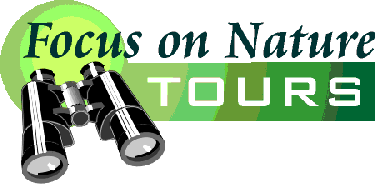 |
PO
Box 9021, Wilmington, DE 19809, USA
E-mail: font@focusonnature.com
Phone: Toll-free in USA 1-888-721-3555
or 302/529-1876
Website: www.focusonnature.com |
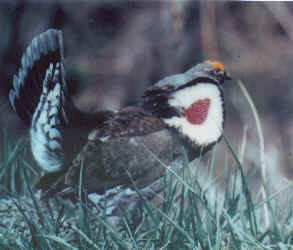 Birds
of COLORADO
Birds
of COLORADO
and in the nearby states of
KANSAS, NEBRASKA,
OKLAHOMA, and WYOMING
from Quails to Woodpeckers
including those during
Focus On Nature Tours
during April and July
noted with an (*)
1993 thru 2015
PART 1 of a List of Birds in Colorado and Nearby
States with some photos,
compiled by Armas Hill
249 species of birds have cumulatively been
seen,
along with 8 additional subspecies.
during 11 FONT Colorado birding & nature tours: 9 in April and 2 in July.
Upper right photograph: DUSKY GROUSE
(photo by Alan Brady)
Link: Part 2 of
this List of Colorado Birds from Flycatchers to Buntings
Codes:
CO = Colorado
KS = Kansas
NE = Nebraska
OK = Oklahoma
WY = Wyoming
apr: during tours in April (usually 3rd week)
jul: during tours in July (1st week)
(USe): endemic to the USA
(USqe): quasi (or nearly) endemic to the USA
(USneb): near-endemic breeder in the USA
(NAi): species introduced into North America
(t): a globally threatened or rare species, designated by Birdlife International
(t1): critical (t2): endangered (t3): vulnerable
(nt): a near-threatened species globally
(ph): species with a photo in the FONT web-site
Links:
Upcoming FONT Birding & Nature Tours in Colorado & adjacent states
A Complete List with some Photos of North American Birds, in 6 parts:
Part #1: Grouse to Anhinga
Part #2: Condor to
Shorebirds Part #3: Jaegers to Cuckoos
Part #4: Owls to
Flycatchers Part #5: Shrikes to Pipits
Part #6: Olive Warbler to
Buntings
Nebraska Birds
Mammals during
FONT tours in Colorado & nearby states (with some photos)
Directory of Photos in this
Website

Birds:
- Scaled Quail ______ apr
CO OK
Callipepla squamata
- Northern Bobwhite (nt) (ph) ______
apr CO KS
Colinus virginianus
- Dusky Grouse (ph) ______ apr
CO (was
called the Blue Grouse, until the more-westerly Sooty
Grouse was recently split from it)
Dendragapus obscurus richardsonii

Now the Dusky Grouse, it was called the Blue Grouse
when this photo was taken
during a FONT tour in Colorado.
(photo by Alan Brady)
- White-tailed Ptarmigan (ph) ______
apr CO
Lagopus leucurus altipetens
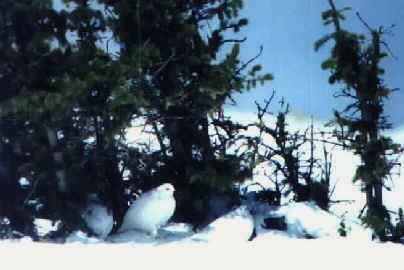
White-tailed Ptarmigan photographed during a FONT tour in Colorado
- Greater Sage Grouse (nt) (USqe) (ph) ______ apr
CO
Centrocercus urophasianus
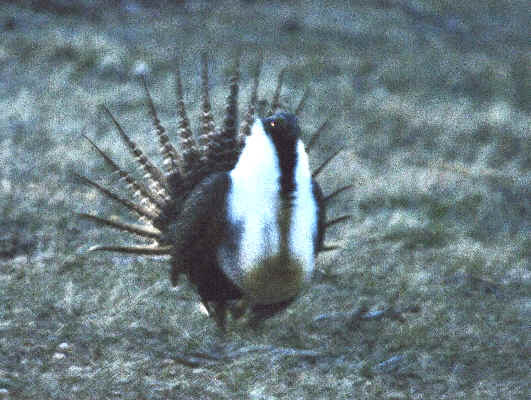
A displaying male Greater Sage Grouse in the very early
morning light,
photographed during the FONT tour in Colorado in April 2009.
- Gunnison Sage Grouse (t2) (USe)
______ apr CO
(nearly endemic to Colorado, with a very few in adjacent Utah - see note
following list)
Centrocercus minimus
- Greater Prairie Chicken (nt) (USe)
(ph) ______ apr CO
NE
(note follows list)
Tympanuchus cupido pinnatus
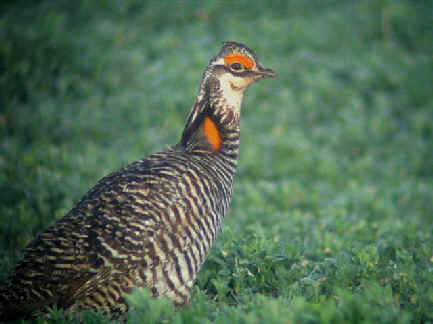
A Greater Prairie Chicken photographed during a FONT tour in Colorado
- Lesser Prairie Chicken (t3) (USe)
(ph) ______ apr CO
KS (note follows list)
Tympanuchus pallidcinctus
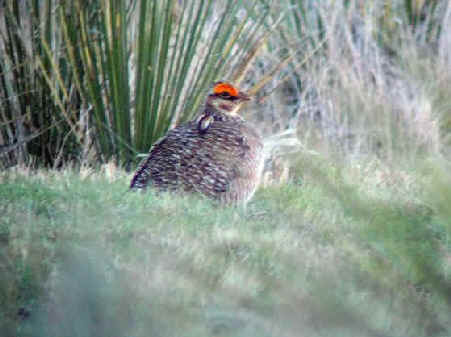
A Lesser Prairie Chicken photographed during a FONT tour in Kansas
- Sharp-tailed Grouse ______ apr
CO NE (note follows list)
Tympanuchus phasianellus columbianus
- Wild Turkey (ph) ______ apr
CO KS NE OK
(introduced population)
Meleagris gallopavo
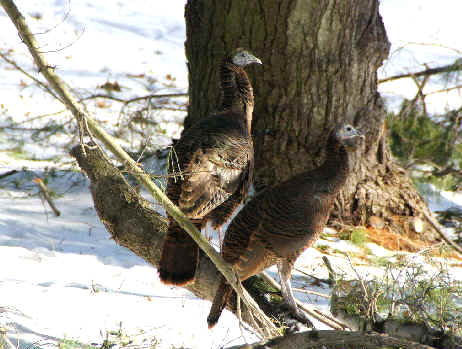
Wild Turkeys
(photo by James Scheib)
- Chukar (NAi) ______ apr
CO
Alectoris chukar
- Common Pheasant (NAi)
______ apr jul CO
KS NE OK
Phasianus colchicus
- Trumpeter Swan ______ apr
NE
Cygnus buccinator
- Mute Swan (i) (ph) ______
apr CO
Cygnus olor
- Greater White-fronted Goose
______ apr CO
Anser albifrons frontalis
- Snow Goose (ph) ______ apr
CO KS
Chen (formerly Anser)
c. caerulescens (known as (known as "Lesser Snow
Goose")
Ross' Goose ______ apr
CO
Chen
(formerly Anser)
rossi
Canada Goose ______ apr
jul CO KS NE OK WY
(in late-spring & summer, introduced subspecies of eastern
North America)
Branta canadensis
Wood Duck (ph) ______
apr jul
CO KS
Aix sponsa
Mallard (ph) ______ apr
jul CO KS NE OK WY
Anas p. platyrhynchos
Northern Pintail (ph) ______ apr
jul CO KS NE WY
Anas acuta
Blue-winged Teal (ph) ______
apr,jul CO KS NE OK WY
Anas discors
Cinnamon Teal ______ apr
jul CO WY
Anas cyanoptera septentrionalium
Green-winged Teal (ph) ______ apr
jul CO KS NE WY (was considered conspecific with the Eurasian Teal, Anas
crecca)
Anas carolinensis
Northern Shoveler (ph) ______ apr
jul CO KS NE WY
Anas clypeata
Gadwall (ph) ______ apr
jul CO KS NE WY
Anas strepera
American Wigeon (ph) ______ apr
jul CO KS NE WY
Anas americana
Canvasback ______
apr jul CO NE WY
Aythya valisineria
Redhead (ph) ______ apr
jul CO NE WY
Aythya americana
Ring-necked Duck (ph) ______ apr
jul CO KS NE WY
Aythya collaris
Lesser Scaup (ph) ______ APR JUL
CO KS NE WY
Aythya affinis
Common Goldeneye ______ APR
CO WY
Bucephala clangula
Barrow's Goldeneye ______ APR
CO
Bucephala islandica
Bufflehead (ph) ______ APR
CO KS NE WY
Bucephala albeola
Common Merganser (ph) ______ APR JUL
CO WY
Mergus merganser americanus
Red-breasted Merganser (ph) ______
APR CO
Mergus serrator
Ruddy Duck (ph) ______ APR JUL
CO KS NE WY
Oxyura j. rubida
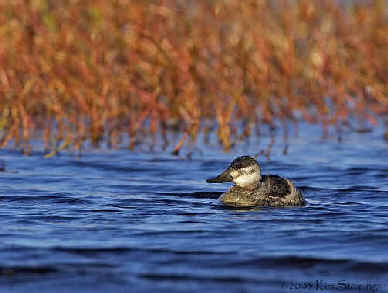
A female Ruddy Duck
(photo by Kim Steininger)
Common Loon ______ APR
WY
Gavia immer
Pied-billed Grebe (ph) ______ APR JUL
CO NE WY
Podilymbus p. podiceps
Eared Grebe (ph) ______ APR JUL
CO WY
(also called Black-necked Grebe)
Podiceps nigricollis californicus
Western Grebe (ph) ______ APR JUL
CO WY
Aechmophorus o. occidentalis
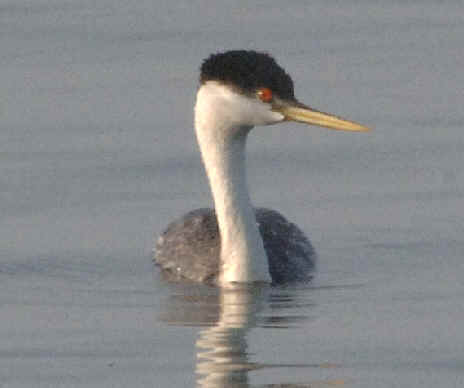
Western Grebe
Clark's Grebe ______ APR JUL
CO NE WY
Aechmophorus clarkii
White-faced Ibis (ph) ______ APR JUL
CO KS WY
Plegadis chihi
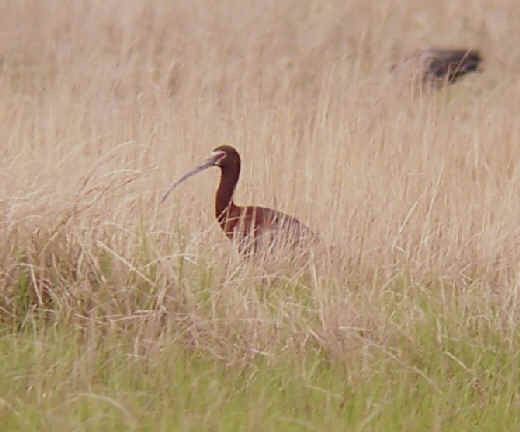
White-faced Ibis
Great Blue Heron (ph) ______ APR JUL
CO KS NE WY
Ardea herodias
Great Egret (ph) ______ APR JUL
CO
Ardea alba
Snowy Egret (ph) ______ APR JUL
CO WY
Egretta thula
Cattle Egret (ph) ______ APR JUL
CO KS
Bubulcus ibis
Green Heron ______ APR KS
Butorides virescens
Black-crowned Night-Heron
______ APR JUL CO KS WY
Nycticorax nycticorax
American White Pelican (ph) ______ APR JUL
CO NE WY
Pelecanus erythrorhynchos
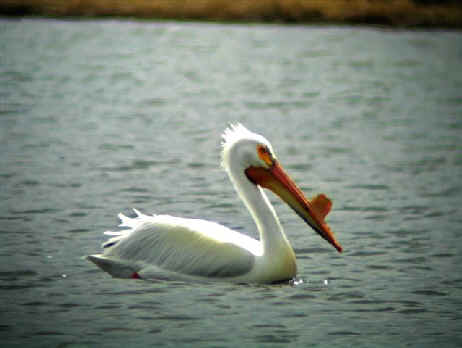
An American White Pelican photographed during a FONT tour
in Wyoming, near Colorado.
The noticeable knob on the bill is a feature of the bird
in breeding plumage.
Double-crested Cormorant (ph) ______ APR JUL CO KS NE WY
Phalacrocorax auritus
Turkey Vulture (ph) ______ APR JUL
CO KS NE WY
Cathartes aura meridionalis
Osprey (ph) ______ APR
CO
Pandion haliaetus carolinensis
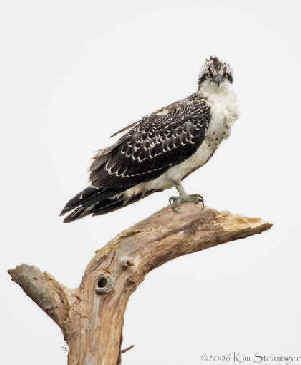
Osprey
(photo by Kim Steininger)
Bald Eagle (ph) ______ APR JUL
CO NE WY
Haliaeetus leucocephalus
Northern Harrier (ph) ______
APR JUL CO KS WY (considered conspecific with the Hen Harrier of Eurasia,
Circus cyaneus)
Circus cyaneus hudsonius
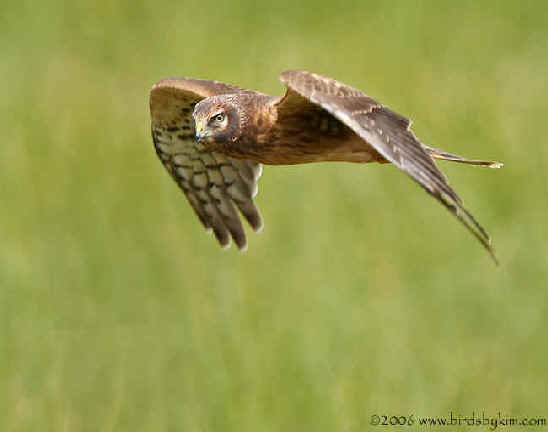
A female Northern Harrier
(photo by Kim Steininger)
Sharp-shinned Hawk (ph) ______ APR
CO KS
Accipiter striatus velox
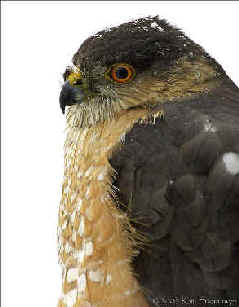
Sharp-shinned Hawk
(photo by Kim Steininger)
Cooper's Hawk (ph) ______ APR JUL
CO KS NE WY
Accipiter cooperi
(monotypic)
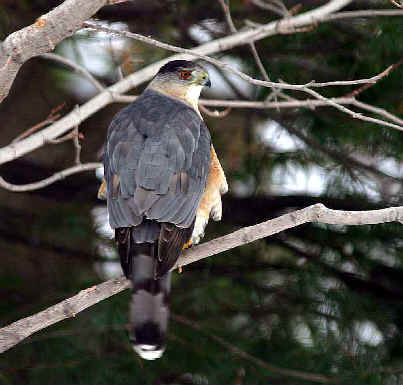
Cooper's Hawk
Northern Goshawk ______ APR JUL CO
Accipiter gentilis atricapillus
Broad-winged Hawk ______ APR
CO(rare)
Buteo p. platypterus
Swainson's Hawk (ph) ______ APR JUL
CO KS NE OK WY
Buteo swainsoni
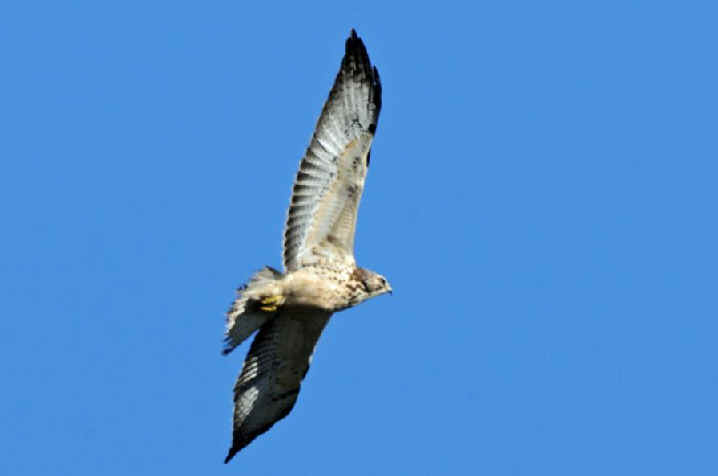
Swainson's Hawk
(photo by Howard Eskin)
Red-tailed Hawk (ph) ______ APR JUL
CO KS NE OK WY
Buteo jamaicensis calurus
"Harlan's Hawk"
______ APR CO WY
(a
subspecies of the Red-tailed Hawk)
Buteo jamaicensis harlani
Ferruginous Hawk (nt) (ph) ______ APR JUL
CO KS OK
Buteo regalis
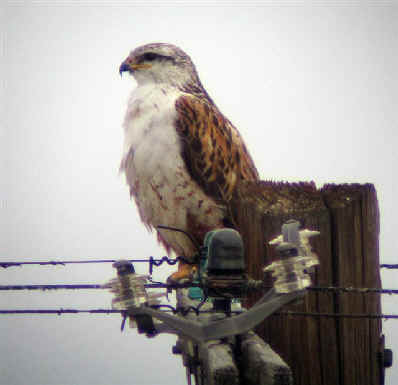
A Ferruginous Hawk photographed during a FONT tour
in Kansas, near Colorado
Rough-legged Hawk (ph) ______ APR
CO WY
Buteo lagopus sanctijohannis
Golden Eagle ______ APR JUL CO
OK WY
Aquila chrysaetos canadensis
American Kestrel (ph) ______ APR JUL
CO KS NE OK WY
Falco s. sparverius
Merlin (ph) ______ APR CO
WY
Falco columbarius richardsoni
Prairie Falcon (ph) ______ APR JUL
CO KS
Falco mexicanus
Peregrine Falcon (ph) ______ APR
CO
Falco peregrinus anatum
Virginia Rail (ph) ______ JUL
CO
Rallus limicola
Sora ______ JUL CO
Porzana carolina
American Coot (ph) ______ APR JUL CO
KS NE WY
Fulica americana
Sandhill Crane (ph) ______ APR
CO
Grus canadensis tabida
Semipalmated Plover (ph) ______ APR
CO
Charadrius semipalmatus
Piping Plover (t3) (ph) ______ APR
CO
Charadrius melodus
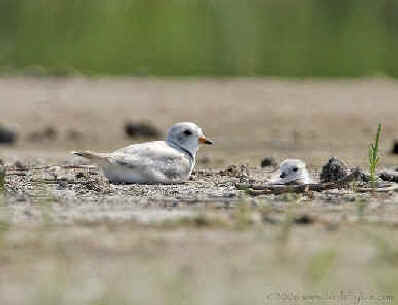
The Piping Plover is an inland rarity in Colorado.
It was seen there during the 2005 FONT tour in the
same vicinity as Snowy Plovers.
Above, an adult & chick.
Nearby, that same day, but in a different habitat,
we also saw the Mountain Plover.
Snowy Plover (ph) ______ APR
CO (no longer considered conspecific with the Kentish Plover of the Old
World)
Charadrius nivosus
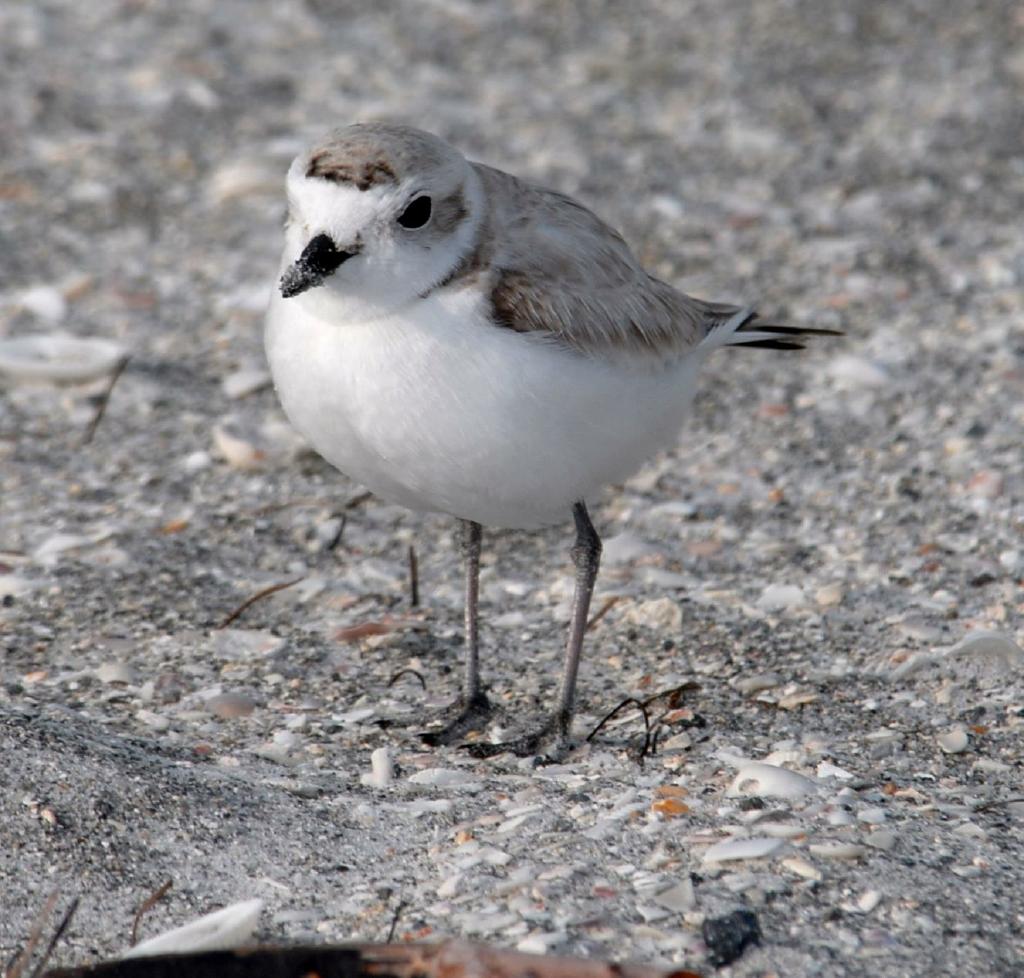
Snowy Plover
(photo by Howard Eskin)
Killdeer (ph) ______ APR JUL CO
KS NE OK WY
Charadrius vociferus
Mountain Plover (t3) (USneb) (ph) ______ APR JUL
CO KS
Charadrius montanus
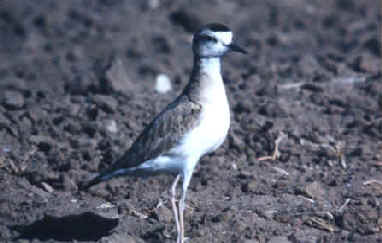
A Mountain Plover photographed during a FONT tour
Black-necked Stilt (ph) ______ APR
CO
Himantopus mexicanus
American Avocet (ph) ______ APR JUL
CO
KS NE WY
Recurvirostra americana
Greater Yellowlegs ______ APR JUL CO
KS NE OK WY
Tringa melanoleuca
Lesser Yellowlegs (ph) ______ APR JUL
CO
KS
Tringa flavipes
Solitary Sandpiper (ph) ______ APR
CO
KS
Tringa solitaria
Spotted Sandpiper (ph) ______ APR JUL
CO
KS
Actitis macularia
Willet (ph) ______ APR JUL
CO
Catoptrophorus semipalmatus inornatus
Long-billed Curlew (nt) (ph) ______ APR
CO NE KS
Numenius americanus
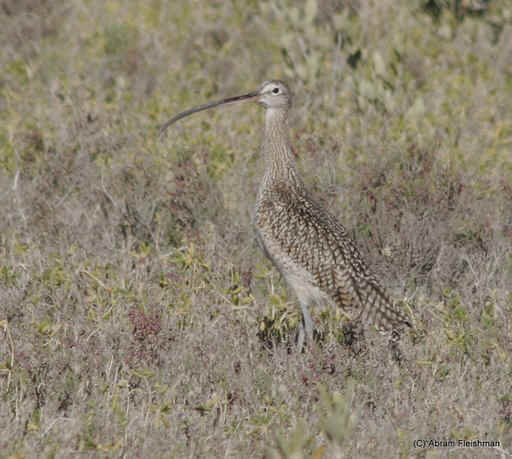
Long-billed Curlew
(photo by
Abram Fleishman)
Marbled Godwit (ph) ______ APR
CO
WY
Limosa fedoa
Semipalmated Sandpiper (ph) ______ APR CO
Calidris pusilla
Western Sandpiper (ph) ______ APR
CO
Calidris mauri
Least Sandpiper (ph) ______ APR
CO
Calidris minutilla
Baird's Sandpiper (ph) ______ APR JUL CO
KS
Calidris bairdii
Pectoral Sandpiper (ph) ______ APR
CO
Calidris melanotos
Dunlin (ph) ______
APR CO
Calidris alpina
Long-billed Dowitcher ______ APR
CO
Limnodromus scolopaceus
Wilson's Snipe (ph) ______ APR JUL
CO
KS WY
(was considered conspecific with the Common Snipe of
the Palearctic, Gallinago gallinago)
Gallinago delicata
Wilson's Phalarope ______ APR JUL
CO KS
Phalaropus tricolor
Franklin's Gull (ph) ______ APR JUL
CO KS WY
Larus pipixcan
Bonaparte's Gull (ph) ______ APR
CO
KS WY
Larus philadelphia
Ring-billed Gull (ph) ______ APR JUL
CO WY
Larus delawarensis
California Gull (ph) ______ APR JUL
CO
WY
Larus californicus
"American" Herring Gull ______ APR
CO WY
Larus argentatus smithsonianus
Caspian Tern (ph) ______ JUL
CO
Hydroprogne
(formerly Sterna) caspia
Forster's Tern (ph) ______ APR JUL
CO
NE
Sterna forsteri
Black Tern (ph) ______ JUL coCO
Chlidonias niger
Feral Pigeon (i) ______ APR JUL CO
KS NE WY
Columba livia
Band-tailed Pigeon (ph) ______ JUL
CO
Patagioenas
(formerly Columba) fasciata
Mourning Dove ______ APR JUL CO
KS NE OK WY
Zenaida macroura
Eurasian Collared Dove (NAi)
______ APR CO
KS NE OK
Streptopelia decaocto
Great Horned Owl (ph) ______ APR JUL
CO
KS
Bubo v. virginianus
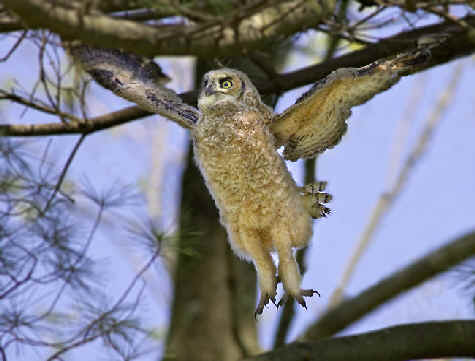
A young Great Horned Owl leaving the nest.
During FONT tours in April in eastern Colorado & western Kansas,
Great Horned Owls are often seen either on their nests or about to
leave.
Burrowing Owl (ph) ______ APR JUL
CO
KS NE OK
Athene cunicularia hypugaea
Common Nighthawk ______ APR JUL CO
Chordeiles minor
Common Poorwill ______ JUL CO
Phalaenoptilus nuttallii
American Black Swift ______ JUL CO
Cypseloides niger
White-throated Swift ______ APR JUL CO
Aeronautes saxatalis
Black-chinned Hummingbird (ph) ______ APR JUL
CO
Archilochus alexandri
Broad-tailed Hummingbird (ph) ______ APR JUL
CO
Selasphorus platycercus
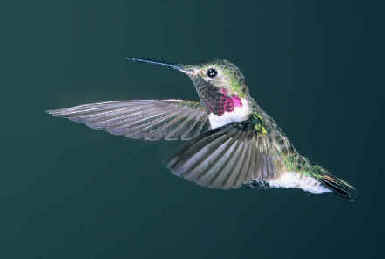
A Broad-tailed Hummingbird photographed during a FONT tour.
Belted Kingfisher (ph) ______ APR JUL
CO
KS NE WY
Megaceryle (formerly Ceryle) alcyon
Lewis' Woodpecker ______ APR JUL CO
Melanerpes lewis
Red-bellied Woodpecker (ph) ______ APR
CO
Melanerpes carolinus
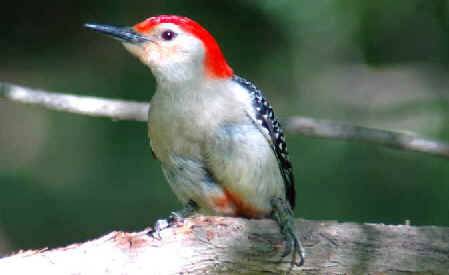
The Red-bellied Woodpecker reaches the far western edge of its range
in far eastern Colorado.
(photo by Howard Eskin)
Red-naped Sapsucker (ph) ______ APR JUL
CO
WY
Sphyrapicus nuchalis
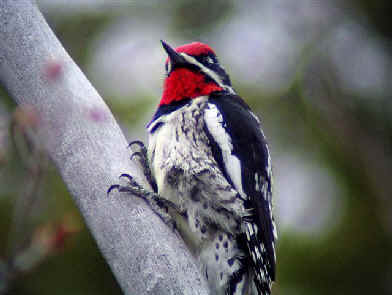
A Red-naped Sapsucker photographed during a FONT tour
in Colorado in April
Williamson's Sapsucker ______ APR JUL
CO
Sphyrapicus thyroideus nataliae
Ladder-backed Woodpecker (ph) ______ APR
CO
Picoides scalaris cactophilus
Downy Woodpecker (ph) ______ APR JUL
CO KS WY
Picoides pubescens leucurus
Hairy Woodpecker (ph) ______ APR JUL
CO WY
Picoides villosus septentrionalis
Northern Flicker ______ APR JUL (both
"Yellow-shafted" & "Red-shafted")
CO KS NE WY
Colaptes auratus auratus ("Yellow-shafted")
CO KS NE
Colaptes auratus cafer ("Red-shafted")
CO WY
Notes:
The Gunnison
Sage Grouse
is a newly-described species of the USA heartland.
It is very localized with a range restricted to southwest Colorado and southeast
Utah. It's thought to have formerly been more widespread (possibly in New
Mexico, eastern Arizona, southwest Kansas, and Oklahoma).
Now the bird occurs in 6 or 7 counties of southwest Colorado and a single county
in adjacent southeast Utah. The entire population is estimated at being less
than 5,000 birds, with most (2,500-3,000) in the Gunnison Basin (of Colorado).
Elsewhere populations number less than 300, with fewer than 150 in Utah.
It has disappeared from several population pockets since 1980, with an overall
decline of over 60% in males attending breeding leks in the Gunnison Basin in
the last 50 years.
Formerly considered a subspecies of the more-northerly Greater Sage Grouse, the
Gunnison Sage Grouse of both sexes have plumages
similar to that species, but are about 30% smaller.
There are 3 species in the "Prairie Chicken Group": the
Greater
Prairie Chicken, the Lesser Prairie Chicken, and the
Sharp-tailed Grouse.
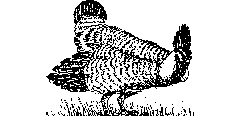
There have historically been 3 subspecies of
Greater Prairie Chickens.
In the eastern United States, the subspecies T.c. cupido, called the
"Heath Hen", occurred formerly in bushy habitat from Boston south
to Washington. It was extirpated on the mainland about 1835. It continued to
survive beyond that on the Massachusetts offshore island of Martha's
Vineyard until it was last reported there in 1932. At that time, the eastern
race of the Greater Prairie Chicken became extinct.
Another race of the species, in coastal Texas, is now very rare. T.c.
attwateri, the "Attwater's Prairie Chicken" has declined in 30
years from 8,700 individuals in 1937 to 1,070 in 1967. After another 30
years, in 1998, only 56 individuals remained in 3 isolated populations. Even
with released captive-reared birds, that subspecies is severely threatened.
The most wide-ranging of the Greater Prairie Chicken subspecies (and the one
occurring in eastern Colorado), T. c. pinnatus, has declined over much of its
range. The population in the late 1970's was estimated as 500,000. Due to
its being in small isolated populations, the species overall is at
considerable risk.
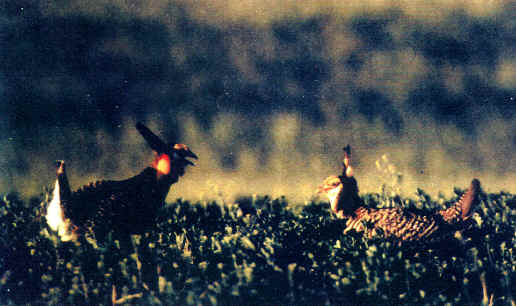
Greater Prairie
Chickens at their lek at dawn.
The Lesser Prairie Chicken has declined substantially since the European
settlement of the Great Plains. That decline is thought to be over 90% since
the 19th Century, and nearly 80% since the early 1960's.
In 1980, Lesser Prairie Chickens occupied only 8% of their original range
(which was historically throughout the southwest Great Plains, in southeast
Colorado, southwest Kansas, western Oklahoma, northern Texas, and eastern
New Mexico). Now, it is only in small, scattered populations.
The population estimate was about 50,000 birds in about 1980 (from 42,000 to
55,000 in 1979). 20 years later, in 1999, the population was estimated as
10,000 to 25,000, mostly in northwest Texas and
Kansas.
There are 5 subspecies of Sharp-tailed
Grouse. It now occurs in less than
half of its original range in 9 U.S. states. It is now extinct in 8 U.S. states
where it formerly occurred. In the northern part of its range (in Canada), it is
fairly common.
A good source for information (such as that above) about the grouse is the
book: "Pheasants, Partridges, and Grouse" by Steve Madge and Phil
McGowan,
published in 2002 by Princeton Univ Press.

To Top of Page


 Birds
of COLORADO
Birds
of COLORADO![]()


























![]()